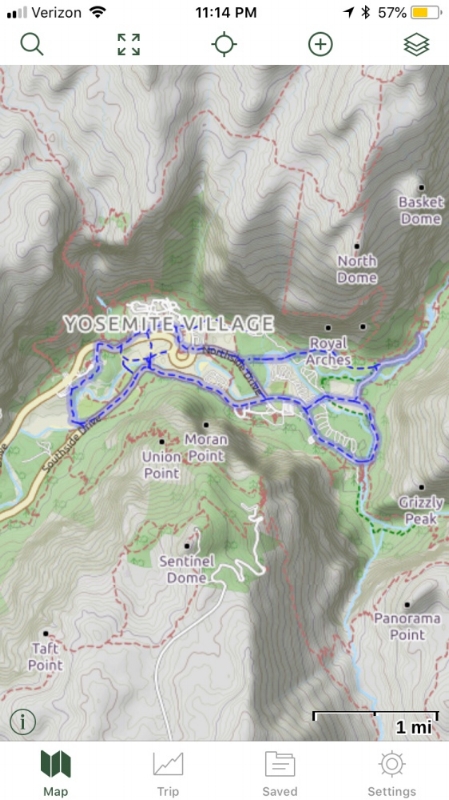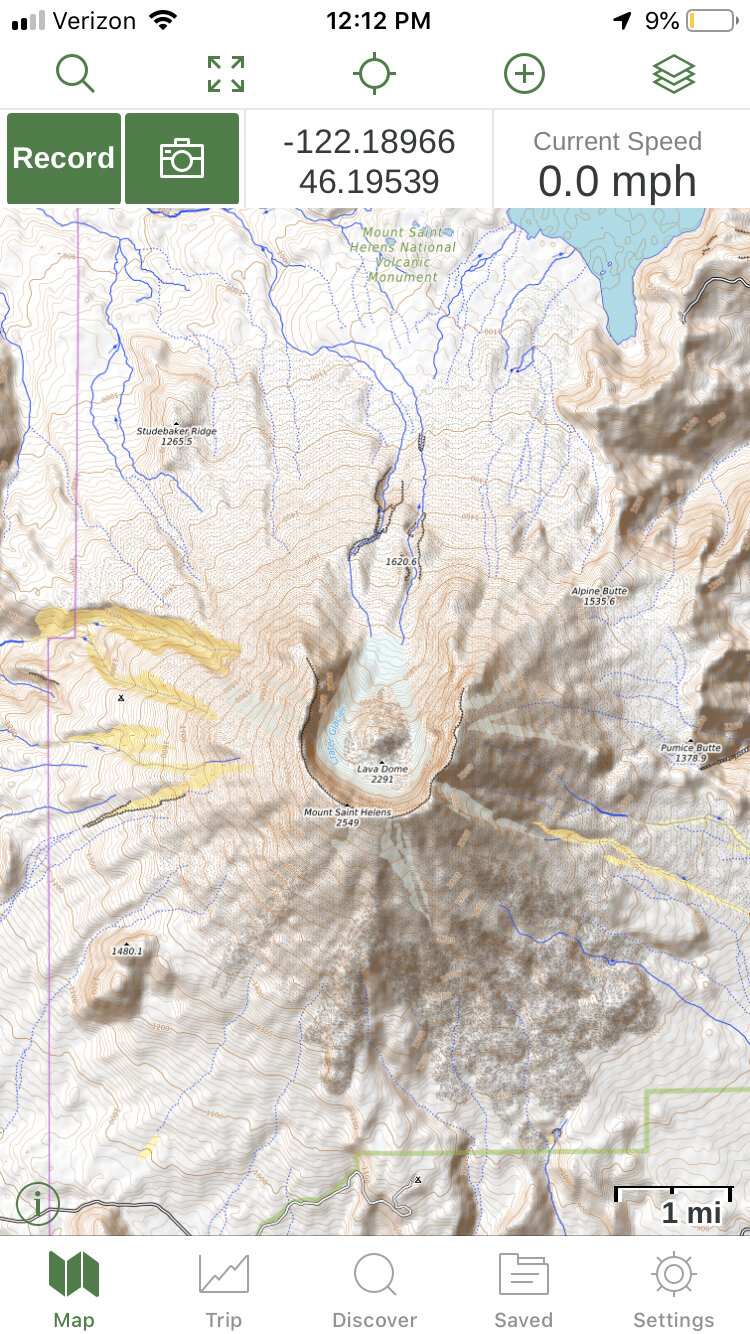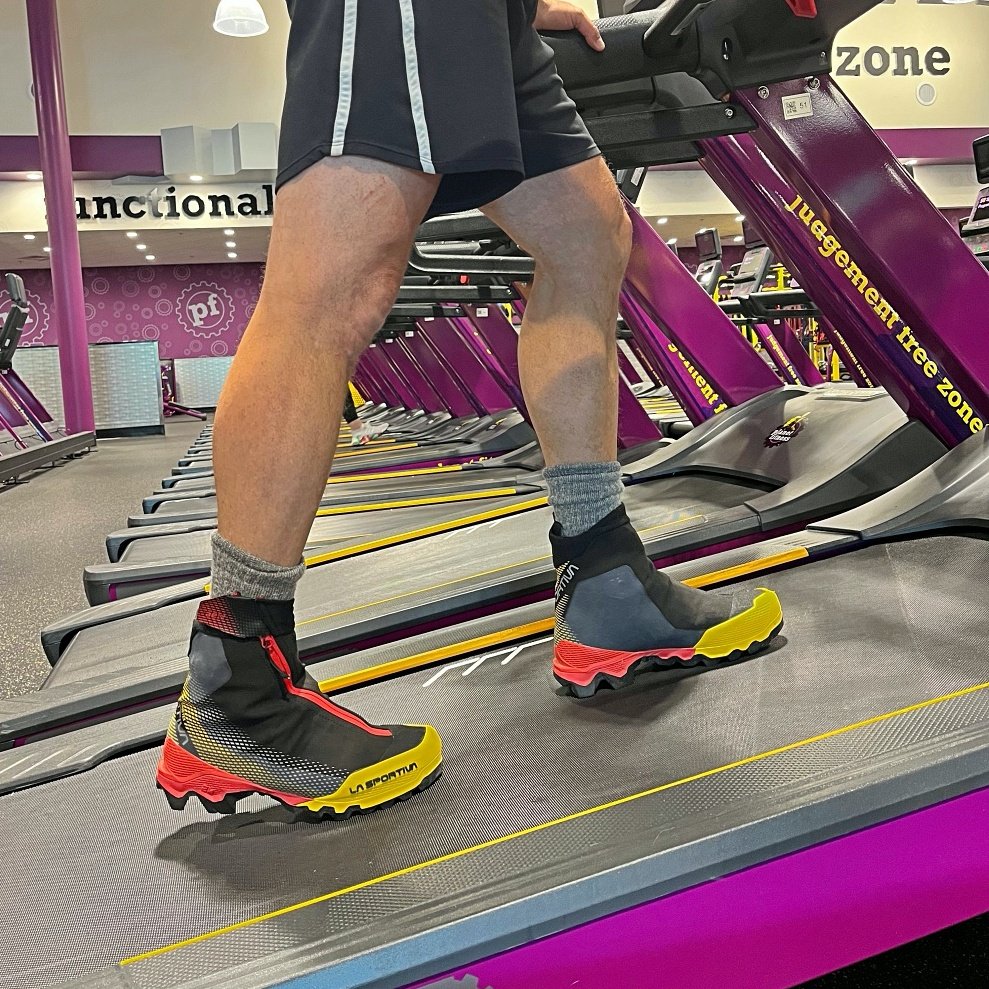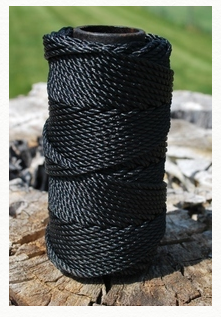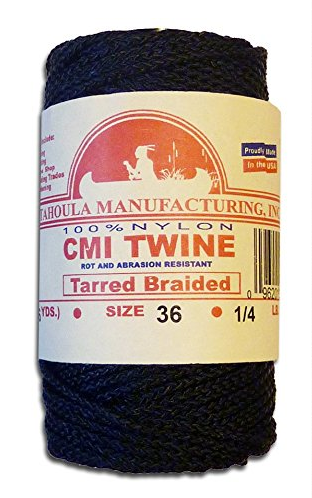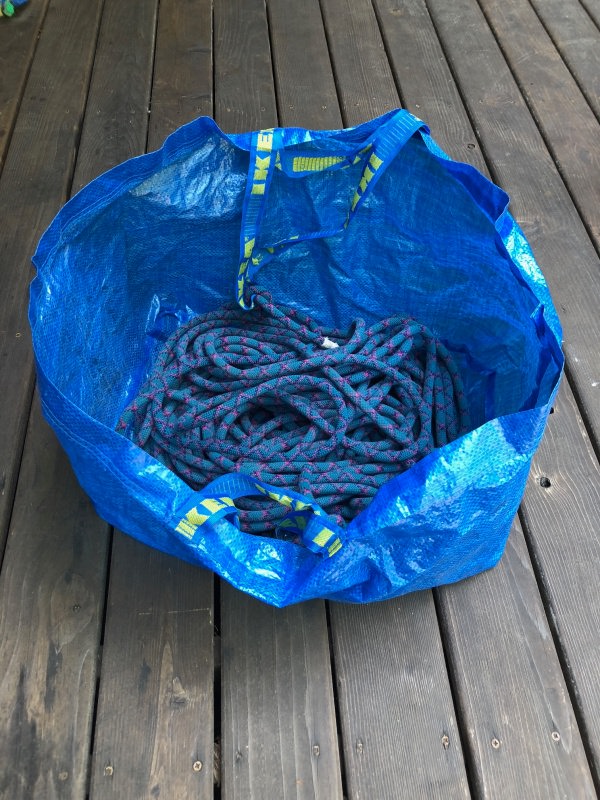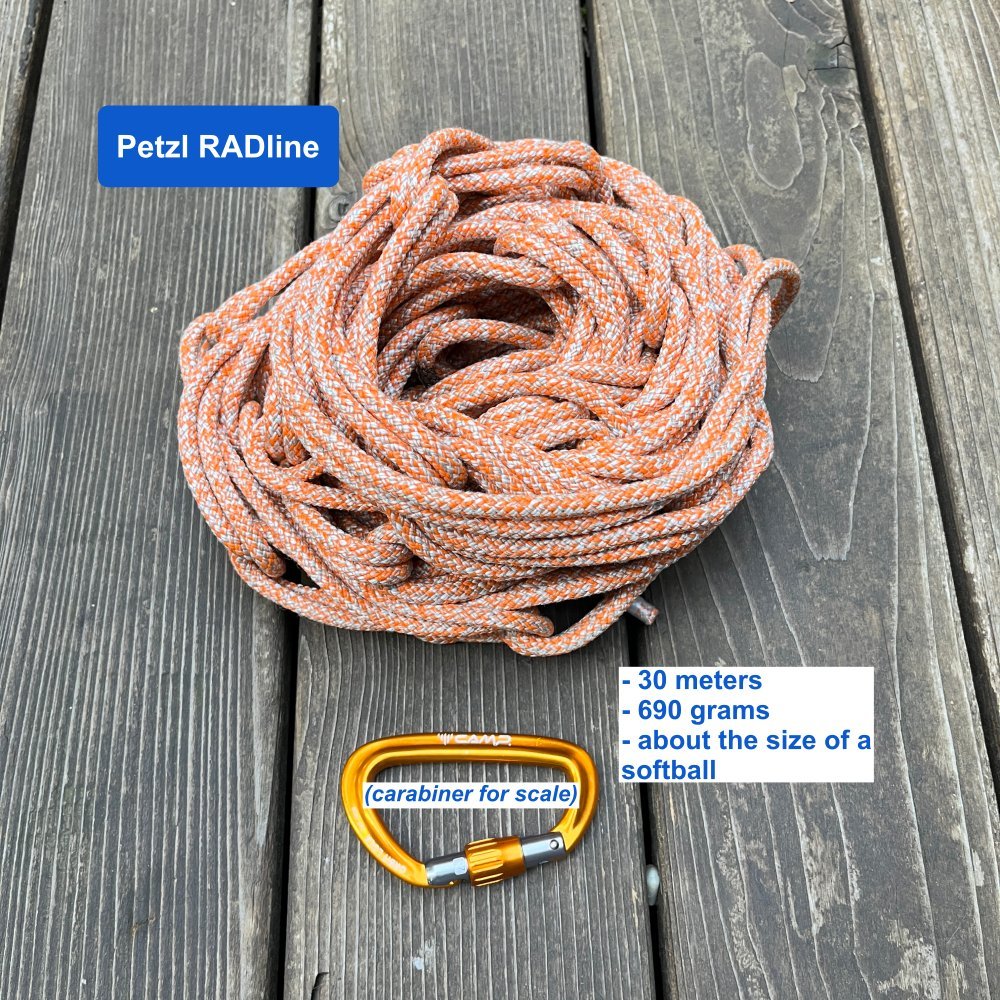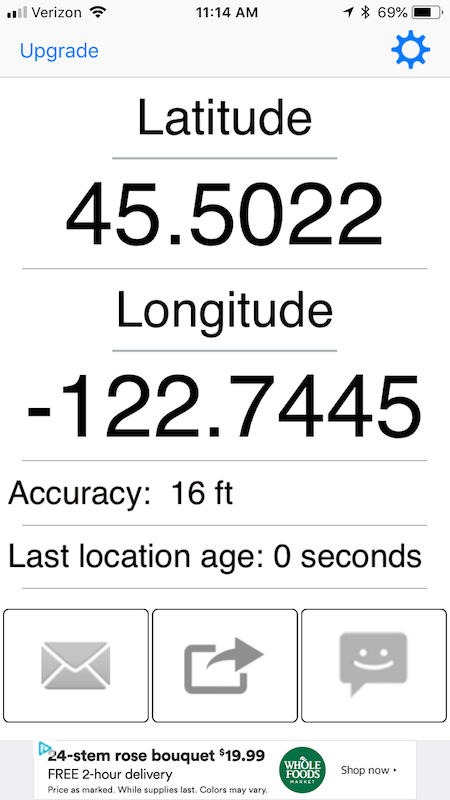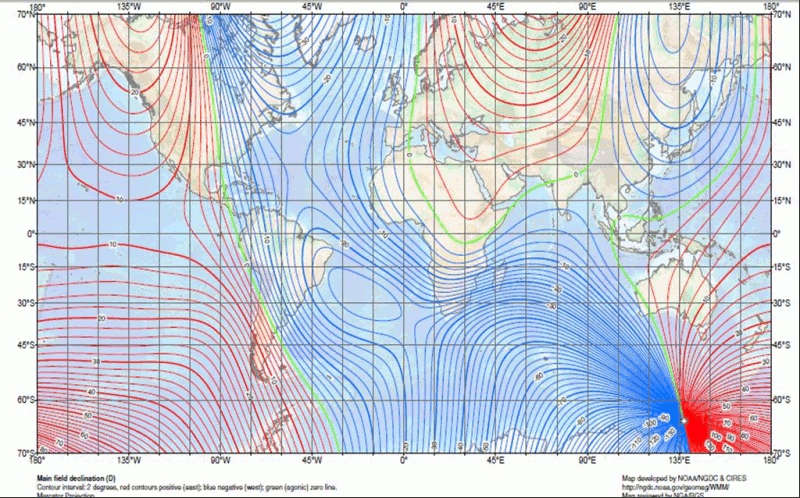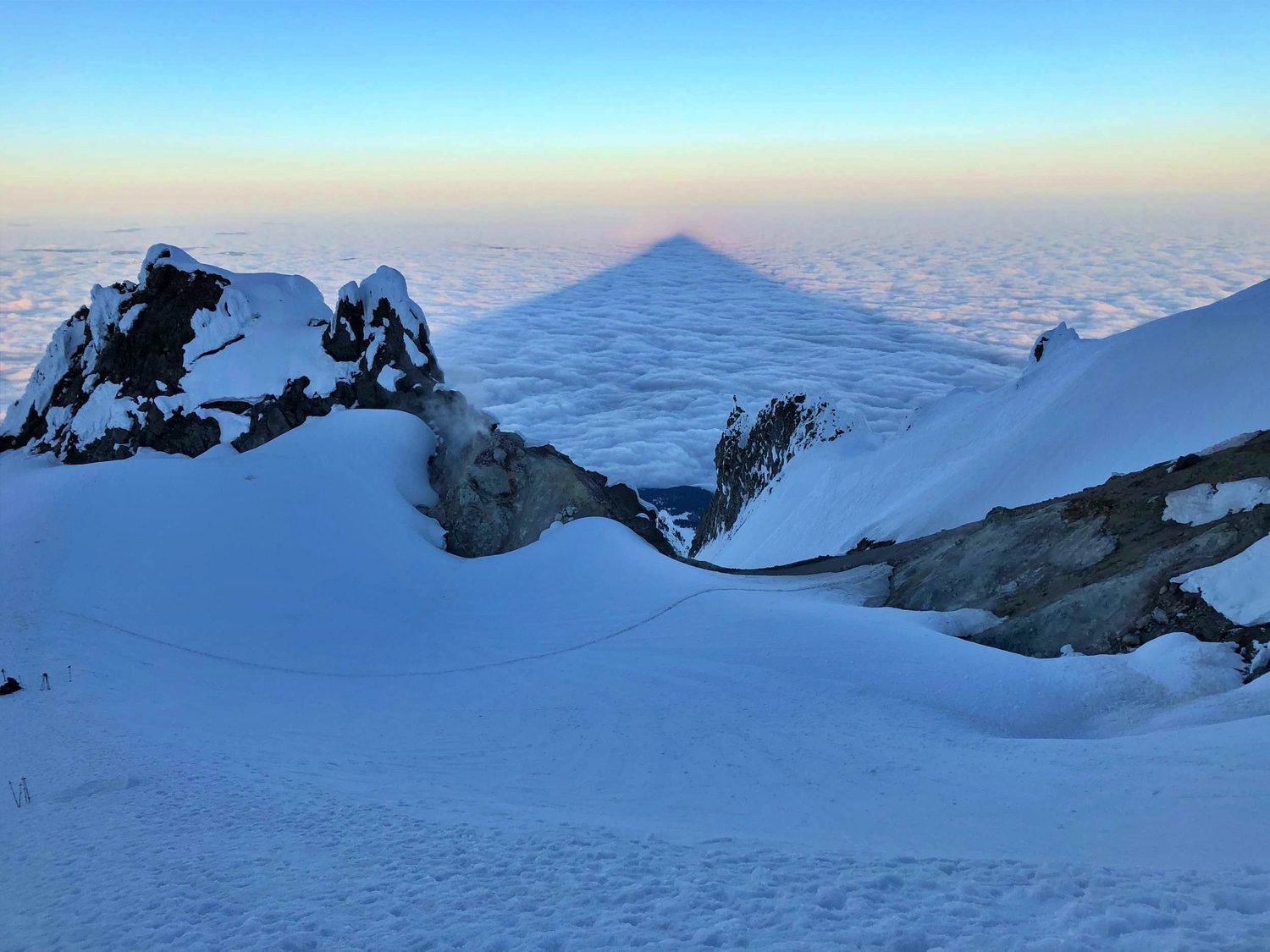
Alpine Tips
Using an existing rope to set up a top rope
Use this rock gym employee trick to set up your next outdoor top rope, as long as someone else is climbing there already.
Here’s a Crafty Rope Trick (CRT) for the local crag - use someone else’s rope to set up your toprope.
Scenario: you’re waiting at the base of a popular route at for the previous party to finish their climb. While you’re keen to try the pitch, it’s rated at the upper end of your comfort level for leading, and you’d really prefer to climb it on top rope.
Here’s how you can use the rope from the previous team to set up your top rope.
Before the previous team has pulled the rope through the anchors, ask them if you can do the following trick.
Pull out your roll of athletic tape (which should be in every rock climber’s backpack), and tape one end of your rope directly to one end of the other team’s rope that’s running up and then down through the anchor.
This connects the end of your rope butted up to the other, with no knot that would otherwise get caught in the anchor.
Tape it generously and tight, with 3-4 inches of tape on either side where the rope ends butt up against each other.
Now, the previous climbing team can pull their rope through the anchor. If all goes well, it also pulls your rope up, through the anchor, and down to the ground. Remove the tape from the two ropes, and you’re all set up to top rope. Slick!
I first saw this Crafty Rope Trick in a rock gym, when the course setter was replacing a worn out rope. I thought he was going to have to climb the route and thread the new rope through the anchors, but nope, he stayed on the ground the entire time and use the old rope to pull the new one through the chains. Very crafty!
Etiquette note: After the first person on your team gets to the top, it’s generally best if they make an anchor with their own gear and rerig the rope to run through it. This way, you’re not toproping directly through the fixed anchors and thus putting unnecessary wear on this gear. (This practice can change according to the climbing area and the type of hardware in use, so ask the locals if you’re unsure.)
1 - Place the rope ends butted up together. Try to get the rope ends lined exactly, so there's no little bump in the final tape wrap that could get hung up.
2 - Start wrapping athletic tape around the ropes, 3-4 inches from the end.
3 - Keep wrapping, overlapping the tape edges, and giving a few extra wraps where the rope ends meet.
(Yes, I swapped the ropes left/right for this photo, but I bet you can follow along . . .)
4 - Give a few squeezes to the tape when you're done. Leave a cm of tape of so left over and fold it back so you can easily unwrap it. The final length of tape should be about a hand span, or 6 inches.
5 - Done! Now, when you pull one rope, in this case green . . .
. . .the taped ends should pass through the chains . . .
and all through! Keep pulling green, and then you're ready to toprope on blue.
Use a tagline
Your big wall lead rack is pretty darn heavy, and it's going to be stupidly heavy if you take every single thing you need on a long, hard pitch. Instead, just take a light tagline, and pull up gear as you need it.
Imagine you're leading a long pitch on a big wall. The anchors are in sight, phew, you’re almost done, and suddenly . . . the Bad Climbing Fairy suddenly clips a 20 pound / 10 kg weight onto your harness! Would you want to climb with an unnecessary 20 pounds on you? Well, that's going to be the approximate weight of your haul rope plus everything you need at the upper anchor hanging on you near the end of a pitch. Leading a long aid pitch is strenuous! Don’t make it even harder by carrying more than you need.
This is even more important if you are doing some free climbing.
Rarely do you need to start a pitch carrying a load like this! Send out that heavy gear up on the tagline later as you need it.
There’s a fair bit of gear that the leader will need when they arrive at the next anchor. This typically includes:
An anchor kit (at a minimum 4-5 locking carabiners, possibly a mini quad or PAS to make an equalized hauling anchor)
The hauling kit, either a 1:1 or 2:1, typically a locking carabiner, progress capturing pulley, and an ascender, for a bare-bones 1:1
The haul rope, which if it’s a 10 mm 70 meter long static rope will weigh around 5 kg / 10+ lbs (about 70 grams per meter)
Maybe a rope bag to put the haul rope in
Maybe a windbreaker, water, and snacks
Instead of schlepping all this gear on the back of your harness, instead climb the pitch trailing just a lightweight tagline. This is typically 60 m of 5 or 6 mm cord. At the lower anchor, this can feed out of a small designated stuff sack. When the leader gets to the next anchor, they pull up the tag line, which is attached to a small bag with all the needed hauling gear inside.
Note: the team needs to be extra careful with this tag line, otherwise it's going to be an unmanageable mess. It’s best to put it in its own designated rope bag.
High Mountain Gear and Gear Perspective both make excellent small rope bags that are perfect for your haul line.
The leader can carry a second small rope bag to store the tag line as thay reel it in.
The belayer must be sure this “tag gear bag” is ready to get hauled, unobstructed, and has everything inside it that the leader needs.
The medium Fish Beef Bag is a good choice to hold all the tag gear.
http://www.fishproducts.com/pics/beefbags.jpeg
The tag line can also be used to haul up any gear as needed when leading the pitch, such as that number 4 Camalot you might need up high.
If the leader needs gear sent up and they are more than 30 meters up and have a 60 meter tag line, their partner can use the haul rope to extend the tag line, and then can retrieve the tagline back down.
Note: It is super important that the leader not drop the tagline! At the upper anchor, good practice is to pull up some slack, tie it off somewhere safe, and only then unclip the locking carabiner connecting it to your harness, which is probably on the back of your harness and easy to fumble.
Using a tagline can dramatically lower the weight you’re carrying as a leader and free up some precious room on your harness. The one small downside is that it takes slightly more time to set up your “real” hauling system, but the effort you save is usually worth the extra time.
Keep in mind you don't need a fancy Dyneema core expensive tagline such as the Petzl PURline.
This 65 m, 6 mm static cord from Black Diamond would be a good choice.
The "bunny ears" cordelette
Move over, old school cordelette-tied-in-one-huge-loop. Carrying a cordelette that’s “open”, or untied, can be more versatile. If you tie a small loop in each end, also known as “bunny ears”, you can reach placements that are farther apart, carry a shorter amount of cord, and rig an alpine block and tackle.
A standard cordelette is about 6 meters of 7mm cord, tied into one giant loop typically with a more or less permanent double fisherman's knot.
There are other ways to rig it. One is the bunny ears cordelette.
You may not want to carry this with the loops permanently tied, because after a while they're probably going to stay that way. Instead, you can carry it in an “open” configuration, meaning not tied at all. If you're in a situation where the bunny ears could be useful, take a second or two and tie them.
Take the same 6 meters of cord, but rather than tying it in a loop, instead tie a small loop in each end (figure 8 on a bight or overhand; figure 8 is easier to untie). By small, we’re talking an inch or so in diameter, as you only need to clip a carabiner with it. Be sure and dress the knot well and leave a good long tail of 3-4 inches.
So, what's so cool about the bunny ears system? Mostly, it's more versatile.
You can wrap the entire cord around a giant tree or boulder, or thread one end under and around a big boulder or chockstone. (It's best practice to not use a single strand of cord around a rock; better to double it up.)
No annoying knot getting in the way.
You can use it to make an “alpine block and tackle”, as shown in this Tip.
You can use it to connect three pieces of gear that are really far apart, by a clipping one “ear” to each of the outside pieces.
Because the “ears” give you a greater reach, you can use a cord length that’s a few feet shorter. This results in a lighter and less bulky piece of kit to carry with you. (But, first try it with the full 6 meters, and then cut it down later if you think you need to.)
How strong is it?
From my strength ratings page, we see that 7 mm cord is rated about 13 kN, while 6 mm cord is rated to only about 7.5 kN.
Using the rule of thumb that a knot decreases the strength of the cord by about 50%, that tells us the arms of a 7 mm bunny ears should be about 7KN, which should be fine.
For a long time, I thought that doing this with 6 mm standard cord would be a bad idea, because a single strand with a knot with only be rated around 4 kN.
However, I tested this with my buddy Ryan Jenks from howNOT.com, and guess what? 6 mm cord set up just like below broke around 15 kN! For me, that is #SuperGoodEnough. Here's a link to the video if you want to see the testing.
If you used some stronger cord with a Dyneema or Kevlar core like Sterling VT-X (15 kN), or Sterling Powercord (19 kN), then your bunny ears cordelette would be even stronger.
Below, the “bunny ears are used to clip three pieces of gear that are quite far apart. (And yes, anchor critics, the angle between the left and center strand is a little wider than is ideal . . .)
(and yes, there’s no “shelf” if you rig it this way, but the shelf is an optional part of an anchor. Want to tie in to the master point yourself and belay your second from the master point? No problem, shelf not needed.)
You can use it to connect three pieces of gear that are fairly close together, by clipping both ears to one piece. This gives you about the same “size” you’d have if you tied it in the traditional “one huge loop” style.
And, with some clever rigging, you can even connect two bolts that are side-by-side at chest level in a standard sport anchor configuration. In this case, the two ears are clipped to the left bolt, and the remaining strand is passed through the carabiner on the right bolt, doubling the cord and halving the distance.
This makes a tidy, compact anchor with two adjacent bolts. even with a huge long cordelette.
You know that Murphy's Law of using a cordelette, that the dang double fisherman’s knot always ends up right where you’re trying to tie the master point? That little hassle is gone with this system. (And yeah, I know you can mitigate that by clove hitching the knot next to your highest gear placement.)
On longer alpine climbs, bringing a cordelette gives you a ready-made source of material for rappel anchors. With the bunny ears rig, the small loop knots are usually fairly easy to untie, giving you more rap anchor material. When you tie a cordelette in a permanent fisherman’s knot, that sucker is going to get welded shut after a few climbs, and is just about impossible to untie unless you use needle nose pliers.
So . . . it works for anchors spread far, medium and close together, and easier to untie to cut up for rap anchors. What's not to like?
PS - Don't take my word for it, it's on the Petzl website.
image: https://www.petzl.com/CA/en/Sport/Installing-an-equalized-belay-station
Emergency fire starter - bicycle inner tube
This emergency firestarter is free, very lightweight, completely waterproof, and gives you a nice steady burn for at least five minutes. Oh, and be sure to stay upwind.
A bicycle inner tube cut about 1 inch wide works great for a firestarter. It’s free, can’t soak up water, weighs nothing, packs well, and burns great for a few minutes, enough to catch damp tinder.
Only problem is that it stinks, so stay upwind. Yes, it’s toxic and nasty, but it’s for emergency purposes only, not as a regular go-to fire starter. Punctured tubes are free for the asking at any bike shop.
Wrap two “rubberbands” around a lighter so you always have your flame source and firestarter together.
Wheel style lighters don’t work when wet. One solution: Cut a small bit of plastic bag, put it over the business end of the lighter, and then secure it in place with one of your rubber bands.
If you're looking for a great fire starter for everyday use, you can read about one here.
A better, and silent, way to signal “off rappel”
Here’s a silent and effective way to tell your partner you’re off rappel.
Rather than yelling up “off rappel”, which may or may not be heard if it’s a windy day or you’re out of sight, try this instead:
when the rappeler is safe on the ground or at the next anchor and off rappel, she grabs a strand of the rope with each hand, and pulls the strands back and forth in large arm motions, several times.
This does two things.
It silently signals the remaining climbers that they can begin their rap set up.
It ensures that the ropes can pull freely. If the ropes are crossed, or hung up or in someway making the rope pull difficult, this can hopefully be remedied by the next climber down.
This tip is originally from Topher Donahue via Climbing magazine
What are the most useful Gaia GPS map layers?
Gaia GPS has an astounding number of map layers for you to choose from. Here's a short list of my personal favorites.
Gaia GPS, one of the best available smart phone apps for wilderness navigation, has an amazing bounty of map layers. It's easy to get a little overwhelmed and wonder which ones might be best for a particular activity.
If you're fairly new to Gaia, you may want to check out layers listed below. No doubt you’ll come up with your own favorites over time, but these will be a great start.
(Note, some of these might be only available with a Premium subscription.)
Driving urban areas and paved roads: MapBox Streets HD
Major roads are clearly delineated, easy to read at a glance while you’re driving, pretty good points of interest. Nice road network, but no elevations. Minor roads can be a little hard to see.
Bike riding, some trail hiking, and driving obscure backroads: Open Cycle
Small roads have the same line weight as bigger ones, so it’s easy to see when you’re at a tiny junction. Open source maps means map features are likely going to be more accurate than other sources. Note the bicycle path in the valley floor in blue, but also all of the hiking trails are shown, in red dashes. Contours and shaded relief are shown, but no elevations. (The resolution of my screen grab below for some reason looks a little fuzzy, it’s quite a bit better in real life.)
Satellite view: Satellite with labels
Gaia GPS has several different satellite layers, and “Satellite with label” is my favorite. It seems to have the clearest imagery, especially when you zoom way in, and having roads labeled is a big help. (They recently have added a hydrology layer, which shows every little tiny stream at a certain zoom level, which is kind of distracting.)
Backcountry hiking and climbing: Outdoors and Open Topo
The rather boringly titled “Outdoors” layer is a worldwide topo map based on Open Street Map, that has labeled hiking trails, ski runs, and mountain peaks, as well as shaded relief and easy to read contour lines. (You can see the same layer in Caltopo where it’s called “TF Outdoors”.)
Note the easy to see and well labeled hiking trails, even when you're zoomed pretty far out.
The Open Topo layer has great shaded relief, shows some general terrain such as forest, rock, and snow, has lots of streams and drainages (sometimes too many, IMHO), contours and elevation (in meters). It does have trails, but they are a little harder to see and use need to be zoomed in pretty close.
Open Topo is no longer part of Gaia GPS, so you need to add it as a custom layer (which, like most things in life, is easy once you know how.) Learn to add Open Topo as a custom Gaia map layer here.
Carry a first aid book on your phone
Sure, you've probably taken a first aid class at some point. But if you're lucky, you've never had to use it. Why not back up your hands on training by having a complete first aid book on your phone?
Your climbing partner just took a fall on lead when they were crack climbing, and managed to dislocate their shoulder. You're a two-day hike in, and if you can get that shoulder back into place, things are going to get better in a hurry. But dang, that first aid class you took a few years ago has faded to a distant memory, and you can't even remember if they covered shoulder reduction in the first place!
Yikes, what do you do?
One smart way to augment your hands-on first aid training is to have a wilderness first aid ebook on your phone. As a "virtual book" it weighs nothing, last forever, and could literally be a lifesaver someday in the backcountry.
Of course, having access to a first aid book in no way replaces taking a proper class, but this can be a good backup to refresh your knowledge.
Here's a great option, the Wilderness Medicine Handbook Digital Edition. It’s from the excellent website wildmedcenter.com. This company also has a great online store, where you can purchase small quantity and high-quality supplies for your backcountry first aid kit which are often quite hard to find.
image: https://www.wildmedcenter.com/digital-wilderness-medicine-handbook-v60.html
Here are a two more options. Click each image for a link to Amazon. (These are NOT affiliate marketing links and I make no money if you click through, I’m simply providing them as a convenience.)
The Kiwi coil – shorten the rope on varied terrain
When your rope team is transitioning between glacier travel, pitched climbing and easy terrain, you probably don’t want the rope at full length, especially for the easy parts. Solution: the Kiwi coil.
Image: https://youtu.be/PD6jYQobGXU
Taking in coils of rope to shorten the distance between you and others on your rope team, (aka the Kiwi Coil, apparently named after the New Zealand guides who invented it) is a very useful but often misunderstood and underutilized technique. Often, quickly shortening your rope, tying it off, and then walking just a few feet away from others on your rope team is faster, safer, and a more efficient way to move in alpine terrain than keeping your rope team stretched out.
Consider this scenario:
You and your two pals are on the Disappointment Cleaver route on Mt. Rainier.
From your high camp at Camp Muir, you first cross a glacier for about 15 minutes.
Then go up a rock/scree spur for about 20 minutes.
Then another 30 minute glacier crossing.
Then get on the rock/scree of the Cleaver for an hour or so, then back again on to glacial ice, . . . you get the picture.
Of course, you need to be roped up with proper distance between partners on the glacier. But when you get to the rock sections and don’t need a rope for safety, what you do? You have three choices: 1) completely untie and store the rope, 2) continue walking with 40 or so feet of rope between you, and 3) shorten the rope and tie it off.
Plans one and two both have drawbacks.
Completely untying, coiling and storing the rope can take a lot of time, if you need to do it repeatedly on a longer route.
Continuing to walk on easy terrain with 40 feet of rope stretched between you is a Big Hassle, as the rope will constantly get caught on small outcrops of rock or snow, and possibly cause rockfall on you or others.
A better technique is to take in coils of rope until you are just a few meters away from your partner, then securely tying the rope off. After a bit of practice, you’ll be able to do it in a minute or so without even stopping. When you again find yourself on terrain where you need a full rope length between you, dropping the coils and stretching out the rope takes just a few seconds.
Note: Tying off coils of rope like this may not be the best choice for glacier travel. It can work, but with a few extra steps, such as tying an extra overhand loop between you and your partner, so you can clip the rope to an anchor and let out the slack rope without strangling yourself. Also, a kiwi coil can raise your connection point closer to your chest, which might make it more difficult to arrest a fall because your center of gravity is higher.
For glacier travel, a more common method is for the end climbers typically will take in about 30 feet / 10 meters of rope, clip into a fig 8 or butterfly loop, and then simply stash the extra rope in or on their packs.
While the technique is simple, it is rather hard to describe in words. (But I’ll try:)
Take in coils around your neck
Take a bight of rope about 1 meter long
Pass the bight through your tie in loop and the coiled rope loops
Tie off the bight with an overhand knot on the load strand of the rope
Cinch the knot tight against the coils
Clear as mud, right? Fortunately, here’s a great instructional video from the excellent American Mountain Guide Association (AMGA) video series, featuring IFMGA Certified Guide Emilie Drinkwater of Cloudsplitter Mountain Guides.
Test boots for a good fit - gym treadmill
It’s tricky to give boots an adequate test drive before you buy them. You can't take them outside on a muddy hike and then expect to return them if you don't like them. Solution: treadmill at a gym. If they fit, great, keep them. If they don't, they should be in pristine returnable condition.
When you buy a pair of hiking or climbing boots, you want make sure the fit is exactly right. Strolling around on the carpet at the outdoor store is not going to help much.
But, you also can’t go tromping around outside and expect to bring the boots back if they don’t fit.
So . . . you need a way to give them a decent test drive, while keeping them in pristine condition.
A great way to check for a good fit (and break them in a bit if you decide to keep them) is to wear them on a treadmill at a gym. Use the thicker socks you’d normally wear with them, and for about 15 minutes keep the treadmill flat. Then gradually increase the angle of the treadmill, which will quickly tell about the fit in the blister-prone heel! Wearing a pack with 20-30 lbs is a further refinement. Go for at least 30 minutes.
Sure, you’re going to get a few strange looks from other people in the gym, but that’s part of the fun.
If they fit, keep them. If you think you can do better, no worries, take ‘em back.
No gym membership? Most gyms offer a free one day guest pass.
The most common rookie aid cleaning mistake
The most common mistake when cleaning an aid pitch is to jam your top ascender into the carabiner. Here's a rule of thumb to avoid it.
Probably the classic beginner cleaning mistake when using ascenders on a big wall is not pay attention to what’s above you, jam your top ascender up tight against a carabiner or knot . . . and get hopelessly stuck. Your ascender needs to move a tiny bit forward for the cam to disengage, and if you slam it up hard against a carabiner with the rope stretched tight under your body weight, this is not gonna happen. (This becomes even more of a problem if the rope is heading off on a bit of a traverse. I learned this the hard way on my first big wall.)
A good rule of thumb: always stop your ascender about the width of a fist, or say 4 or so inches, away from a carabiner or knot. This will ensure you always have enough room to back it down or remove it.
Here’s the WRONG way. The ascender is jammed up tight against the carabiner, making it near impossible to move it up, down, or remove it from the rope.
(Note - climber, harness, daisy chain etc. not shown for clarity.)
Here’s the CORRECT way. The ascender is stopped about 3-4 inches below the carabiner. This gives you room to move the ascender up, down, or remove it from the rope and reattach it above the carabiner you need to clean, a common cleaning tactic on traverses like this.
Rappelling on ropes of 2 different diameters
Rappelling on ropes with two different diameters can cause the rope ends to be uneven, which could be a problem if you have a full length rappel. Here’s how to fix this.
You’ve finished a long multi pitch climb, using a single 10 mm rope. From the top, you need to make some double rope rappels to get down.
You partner carried a lightweight 8.5mm rope in her pack, and you now need to use it to make your long rappels. (You chose not to climb with double ropes, because the route was pretty much straight up, and you decided with your partner that the extra hassle/cluster factor of double ropes was not worth it.)
Before you head down the lines, you want to be mindful of a few things.
When rappelling on ropes of two different diameters, the skinny rope is going to slip through your belay device a little faster than the fat rope, which means the ends of the rope may not stay together.
This happens because there is more friction on the fat rope side, therefore the fat rope has the potential to move with you a bit more as you are descending.
This leads to the possibility that the end of the skinny rope can lift off of the next anchor point, potentially leaving you with rope ends that are uneven. If you’re doing a full rope length rappel, this could be a problem.
(The degree to which this happens depends on a a few things, such as what kind of rappel device you’re using, or how slippery or grippy the rope sheath actually is.)
There’s a few ways to keep this from happening. One is to always put the knot connecting your two rap ropes on the “skinny rope side” of the anchor. That way, if the thick rope starts to migrate, the knot will hopefully be stopped by the anchor master point, and keep the ends of the rope at the same length.
It helps if the master point of the rap anchor is a quicklink or some other small diameter hole, rather than a carabiner, which might allow the knot to migrate through it, making the rope pull difficult if not impossible.
Here's a little pneumonic to help you remember a way to mitigate this: PS, or "Pull Skinny.”
That means when you're finished with your rappel, you always pull the skinny rope, which is the side with the knot.
CORRECT set up. The knot is on the skinny red rope side of the anchor. If the knot migrates, it'll stop at the chain link. "Pull Skinny", or "PS", means pull the red skinny rope to retrieve it.
(Note that the red rope is a 6mm pull cord, used here to easily see that it's a smaller diameter.)
INCORRECT set up. As the larger diameter blue rope migrates, it'll pull the knot downwards.
Another way to mitigate this is simply clove hitch the thicker rope to the anchor, have the first climber rappel on the single strand of the fat rope, and then have the first rappeller tie off both strands at the lower anchor to ensure both rope ends stay at the lower anchor. See photo below.
Tactics for the 4am pee
Every mountaineer has faced that 4 AM decision: Stay in my bag until my eyeballs get yellow, or leave my warm tent, go outside and take a pee? Fortunately, there’s a middle ground.
Altitude, cold, and maybe Diamox can all cause you to urinate more frequently when in the mountains. Snow camping, at night, and stormy weather are all complicating factors, especially at the same time. Stay in your warm sleeping bag and try to hold it, or step outside into the gale to take a pee? It's a tough question all mountaineers face.
Fortunately, there’s a fairly easy solution.
While it’s mandatory gear for a big expedition, a dedicated pee bottle probably won’t be carried on a shorter trip. Solution: a 1 gallon Ziploc freezer bag.
Lightweight, takes up no room in your pack, and can give you relief when you need it most. Yes, 1 gallon is probably more than you need, but you can share the bag with your tent mate. (Word has it that ladies find a bag easier to use than a pee bottle.) Put the bag in the tent vestibule after use in case the closure is not as strong as you thought.
Bonus - The same 1 gallon Ziploc freezer bags also work great as buried snow anchors for your tent. So, you might as well bring a few!
Related tip: If you’re on a longer expedition and you have a designated pee bottle, it will smell pretty ripe after a few days, especially when you open it in the tent. For a pee jug odor preventor, before you settle in for the night, put 2 iodine tablets (the same as for water purification) into the empty pee jug. The iodine kills the bacteria that cause the odor.
Below is one good option for expeditions: The Nalgene 48 ounce flexible Cantene.
Bank line - the best cord you've never heard of
Want a strong and lighter weight alternative to paracord for backcountry cordage? Check out bank line.
Bank line is a black nylon cord/twine that is similar to tennis court netting. It’s exceptionally strong, UV resistant, and inexpensive.
It does pretty much everything paracord can do, but in a smaller diameter, so it's a lot lighter and takes up less room.
The name comes from trotline fishing (from the “bank” of a waterway, hence the name) for catfish or similar critters, where you toss out a strong main line baited with multiple hooks, and return hours later to check your line.
Bank line comes in a variety of diameters and strengths. (Paracord is rated to about 550 pounds.)
#36 bank line has a breaking strength of about 320 pounds.
#12 bank line has a breaking strength of around 100 pounds, and is accordingly thinner and even lighter.
Popular in the survivalist / bushcraft world, bank line can be immensely handy around the house, garage, shop, or campsite.
Think lashing most anything, tent or tarp guy lines, clothesline, trellis for the garden, hanging a food bag, primitive shelter construction . . .
On a big wall, everything needs a way to be clipped in. Bank cord is perfect for making small clip in loops for most anything, and is less expensive than the bulk 2 or 3 mm cord normally used.
Bank cord is “tarred”, which is about what it sounds like. The cord has a thin layer of sticky tar-stuff. This helps knots to be more secure It has a mild petroleum-like smell, which goes away shortly after you open the bag.
The stickiness is not annoying at all. It doesn’t come off on your fingers, just has a mild tacky feel to it.
At the Amazon link below, both rolls of cord cost about $9-10. (With the heavier weight number 36, you get about 140 feet, with the lighter weight number 12, you get about 400 feet. )
Cut webbing at a 45 degree angle
Cut your webbing at a 45 degree angle; it’s easier to tie rethreaded knots.
Webbing is typically cut with a 90 degree, “square” cut. But there’s no real reason to do this.
Instead, cut your webbing at a 45° angle. This gives you a bit of a pointy end, making easier to tie any sort of a rewoven knot, like a water knot or a double fisherman’s.
Making this angled cut is a lot easier at a climbing store that has one of those nifty hot knife tools. Just ask them to do it for you, even if they give you a funny look.
If you don't have a climbing store with a hot knife, you can do it at home. Put the webbing on a piece of scrap wood. Get a cheap utility blade (or hold a razor blade in pliers) and heat it up over a gas stove for about 15 seconds. Make your cut. The hot blade should cauterize the wedding just like the climbing store knife.
(Don’t use a good quality knife for this, because you're probably gonna get some melted webbing gunk on it that will be quite hard to remove. Ask me how I know this . . .)
Lacking this, you can always use a good pair of scissors. After you make the cut, burn the ends in a flame of some kind for a few seconds, and then give the ends a quick squeeze with needle nose pliers to press the melted ends together.
Below - 90 degree “normal” cut on left, 45 degree cut on right.
Need a rope bag? Go to Ikea
For tagging a lot of routes in one day at the crag, rope bags and tarps are great to keep your rope tangle free and clean. Your Swedish big box store has probably the cheapest piece of climbing gear you're ever going to buy.
If you’re planning on getting in a lot of routes in one day at the crag, using a rope bag is a great idea. There’s no need to continuously coil and uncoil your rope between routes, just flake it into the bag and it’s ready to go, feeding out perfectly and (mostly) kept out of the dust.
There are a lot of fancy and a bit expensive rope bags ad tarps out there, but the $1, big, blue, sturdy plastic bag from IKEA works great. It’s big enough to easily hold a 70 meter rope, has stout handles, and has a huge wide opening so you can quickly stack your rope.
Bonus: just that touch of dirtbag to give you a few style points.
A tip on closing the system: for a top rope session, rather than tying a knot in the end of the rope, you could clip it onto a pack or your rope bag. This will pretty much ensure that you will never accidentally pull up the night out of reach when you pull your rope.
For a big wall rope bag, you need something stronger. Solution: Tape two smaller bags together. I like the ones from Trader Joe's. Put one inside the other, Gorilla tape the handles together to form a single clip in point, and then seal the two top edges together with Gorilla tape.
(This “double bag” trick is from the excellent big wall climbing book, “Hooking Up”, by Pete Zabrok and Fabio Elli, highly recommended for a big wall climbers.)
Try a static rope for glacier travel
Are you climbing on a moderate glacier, such as a standard route on many Pacific NW volcanoes, without any actual lead climbing? Consider a static rope.
Are you climbing a low to moderately angled glacier? You need a rope for crevasse rescue only, but not for catching any real leader falls, and you don’t want to carry any more weight or length than you have to.
Consider a static rope. If your only purpose of the rope is for crevasse rescue, then you don’t need the dynamic qualities of a typical lead climbing rope. In fact, the extra stretch in a dynamic rope (especially the skinny ones) will result in a longer fall and will add unwanted stretch to any raising system you may need to build. Conversely, the static rope can give a harder yank on the people up top if the rope management is a little sloppy, with extra slack, so keep that in mind.
These ropes can be up to 40% lighter than a similar length of 8 mm dynamic half rope, typically used in glacier travel by many climbers. (Approx 25 grams per meter compared to about 40 grams per meter.)
Of course, you need to take some measures to add extra friction when rappelling, such as using a device designed for skinny ropes such as the ATC Alpine Guide, adding two carabiners to your belay loop, or maybe even putting both strands of the rappel rope through the SAME hole in your rappel device. As always, practice with these in a controlled environment before you have to do it for real on the mountain.
Several companies offer dry treated, small diameter, ultralight static ropes specifically designed for crevasse rescue.
The Petzl RAD system, an complete kit designed specifically for crevasse rescue, uses very low stretch 6mm static rope. (“RAD” stands for “Rescue And Descent”, for you acronym people.)
The Petzl RADline can be purchased separate from the above mentioned system. I have a long article about this rope, read it here.
Mammut makes a 6mm dry treated Glacier Cord, also a static rope designed for crevasse rescue. This rope has a middle mark and comes with a nice storage bag, which can be used for a clean toss when you need to rappel.
These ropes (usually) play nicely with tiny ascenders and progress capturing pulleys, such as the Petzl Tibloc, Petzl Micro Traxion and the Edelrid Spoc, tools which can simplify the crevasse rescue process.
These specialized ropes typically have a Dyneema core, giving them minimal stretch, light weight, and nice strength, typically about 14 kN. Another benefit is that they absorbs basically zero water, making them lightweight when dragging through snow.
Be careful with your friction knots. You may need use triple wrap prusiks made from skinny 5 mm cord to be sure your friction knots hold on the narrow diameter line.
Read some great gear reviews for these ropes, and a lot more gear, at Black Sheep Adventure Sports.
Here's a quote on this topic from “The Mountain Guide Manual” by Marc Chauvin and Rob Coppolillo (pg 243):
“Because of all the dynamic aspects to a crevasse fall - climbers sliding on the snow surface and the rope and bending over and cutting into the lip - it is becoming acceptable to use static rope.
In fact, Petzl has conducted tests that suggested the spring/rebound nature of a dynamic rope actually makes it more difficult to stop a fall.” If you want to get into the test results, here’s a link to the Petzel website which discusses them.
Here’s a bit of Youtube chat about the topic with another pro guide:
This tip is mentioned "The Mountain Guide Manual" by Marc Chauvin and Rob Coppolillo, and "The Mountaineering Handbook" by Craig Connally.
(This is not an affiliate marketing link, I am offering you these links as a convenience to you and because these books are great.)
Color code your slings
When buying runners, try keep all your single runners one color, and all your double runners another color. This lets you grab the right one with just a quick glance at your harness.
This is an old trick, but a good one:
Make all of the slings of the same length the same color. This lets you glance at your harness and grab the right length of runner that you need.
For example, try to make all of your single (60 cm) slings the same color, like yellow, and all of your double (120 cm) slings a different color, say blue.
Fortunately, manufacturers have gotten on board with this, and now the common color for 60 cm slings seems to be yellow or orange.
(Keep in mind you can shorten a double or connect two singles together to extend them if needed.)
Finally, sport climbing quickdraws aren’t used so much in alpine climbing, so you might want to save those for the bolted routes.
Here's a related tip: the 4:1 ratio
A general rule of thumb for a moderately meandering alpine pitch is to have about a 4 to 1 ratio of single slings to double slings.
So, maybe eight 60 cm slings, and two 120 cm slings. Of course, the length of the pitch and how much it wanders around has a bearing what you carry.
One double 120 cm sling in blue, and four single 60 cm slings in yellow.
Start with this “4:1” short to long sling ratio and you should be good for most routes.
Never drop your phone again
Hesitant to use your phone to take that great photo because you're worried you might drop it with cold fumble fingers? Here's the solution - a phone lanyard.
Sure, we all like to take photos when out on a good adventure. But we also need to keep our phone secure.
One friend, on a recent canyoneering trip, managed to drop his (fortunately waterproof) new iPhone in a muddy pool about 8 feet deep. He took more than 20 minutes of diving down in zero visibility water and feeling around for his phone to retrieve it.
A week or so later, another guy I know managed to drop his phone on a rock climb while taking a photo of his buddy. That phone was gone forever.
Solution: use a phone lanyard.
You can girth hitch it to your belt loop, backpack strap, or wear it around your neck.
There’s a lot of different models out there, but here's one that I have that works great. It’s about $10. I got it online.
(I've seen some marketed recently as more sturdy, or outdoorsy, or whatever. They're all pretty much the same simple design, I say ignore the marketing.)
This has stretchy, rubber-band-like, one size fits all silicone straps go around any existing case you have on your phone. The straps then clip to a thin nylon loop that you can wear around your neck or clip to your pack.
These silicone straps might look a little flimsy, but I have a similar system used with a phone handlebar mount on my mountain bike, and my phone has never fallen off on any trail ride.
It’s probably going to get a few chuckles from your outdoor pals. (But hey, they may drop their phones, and you never will, so who gets the last laugh, right?)
Know how to find your coordinates from your phone
Need to contact 911 when you're in the backcountry? Better have a way to tell them where you are. Learn several ways to get your latitude longitude coordinates from your phone.
I'll be blunt and say this up front: I firmly believe that every backcountry traveller who has a smartphone should know how to find their latitude longitude coordinates and be able to transmit them to 911 (or an emergency contact person) if necessary.
If you ski in avalanche terrain, you have an obligation to learn about avalanche avoidance. If you climb on glaciers, you have an obligation to know about crevasse rescue. Same thing with hiking in the woods: knowing how to find your coordinates from your phone should be a basic qualification of being a responsible backcountry traveler.
It's not just for contacting 911. You can use a coordinate sharing app to text or email an emergency contact person at home. Sometimes in the backcountry with limited cell coverage, you might be able to send a text but not have a reliable voice connection. Many 911 call centers cannot receive text messages, so in that case your best option would be to text your situation and coordinates to a friend in town, and have them contact 911.
Also, I've heard from some people, “Why should I bother using an app like this, 911 uses some technical magic to figure out my phone location anyway.” Well, that can often be true if you're in a city, with lots of cell phone towers and perhaps even Wi-Fi. But, out in the woods with maybe one bar of coverage, some of that magic cell tower triangulation is not going to work too well. Also, doing that can require you to keep your phone on for a longer time, which could be an issue if you have a low battery and need to conserve it. Overall, it's better to be proactive and learn to get your coordinates yourself.
(This article is geared toward iPhone users, because that's what I have. You Android folks, I'm sure you can follow along.)
Note: It’s best to give your coordinates to 911 in latitude longitude, decimal degree format.
Example: 45.1234, -122.1234
This is the more modern, computer-friendly way to specify your latitude and longitude. It's also a lot easier to say over the phone than trying to describe hieroglyphic-like symbols for degree, minutes, and seconds.
If you tell tell your coordinates in another format, such as latitude longitude, degrees, minutes, seconds (example: 45 32’ 13”, -121 56’ 28”) or UTM coordinates (example , 10T 519984 5035478) Search and Rescue (SAR) can figure it out once they get it. However, it’ll be faster and minimize any translation errors by giving your coordinates in decimal degrees, the easiest possible manner. The decimal degree format is also one that every 911 operator should be familiar with, which should further minimize any source of confusion.
Let's cover a few simple ways to find your coordinates on your phone.
1 - A “show my coordinates” type app (Note, these two are for the iPhone)
One option is to use an app whose main purpose is simply to show your coordinates.
Here’s one I like that’s free and pretty idiotproof - “My GPS Coordinates”. It shows your coordinates in a huge font, and less you text or email those, along with a message.
Tip - You can set the coordinate precision to “low”, or four decimal places, which is your position accurate to about 50 feet. (I feel this makes it easier to transmit your position with enough precision to get you found, but not any extra numbers that could potentially cause confusion or be transcribed incorrectly.)
Here's a screen grab:
Another one I like is called “UTM Position Mailer”. It was free for a long time, now it's $2. It does one thing, and it does it pretty darn well - tells you your exact position in UTM coordinates, latitude longitude decimal degrees, and allows you to send an email or a text with this location information automatically inserted.
If you're calling 911, keep in mind that many 911 operators may not be familiar with UTM coordinates. The better choice is to use latitude longitude decimal degree format, which is universally understood by everybody.
Android folks, try searching in the Google app store for “GPS location”. There are all kinds of free apps. Here’s a free Android app called “My GPS Location”. Shows your location and lets you email or text it.
2 - Dedicated GPS app
I’m a big fan of Gaia GPS. if you have that on your phone and know the basics of how to use it, there’s various ways that you can find your location from the app. Here’s a screen grab with one example.
3 - The iPhone compass app
A quite serviceable compass is built into the iPhone operating system. What a lot of folks don't know or realize is that on the bottom of the compass screen, it tells you your latitude and longitude coordinates and elevation. (Yes, the format of the coordinates is degrees, minutes, and seconds, rather than the more generally useful decimal degrees, but that's certainly better than nothing.) Dear Apple, if you’re reading this, please change the format of your coordinates. :-)
Note that you have to have Location Services turned on for your compass to have this visible. Tap Settings > Privacy > Location Services > Compass, and “Allow Location Access” while using the app.
If you do a long touch on the coordinates at the bottom of the screen, a little “copy” box should pop up, copying the coordinates to the clipboard. You can then paste these into an email or text.
Example of the iPhone compass screen, with lat long coordinates and elevation.
4 - Google Maps
It's not very obvious, but if you know where to tap, you can see the coordinates of your location in Google maps. Tap to copy that and paste in a text. Bonus, it's in the preferred decimal degree format. For the iPhone:
Open the Google maps app. Tap the “black triangle in a circle” icon to zoom to your location.
Long touch on your location. This should open a tab at the bottom of the screen.
Scroll up. You should see the latitude longitude coordinates of that position, looking something like this: (45.1234567, -122.1234567).
Long touch the coordinates, tap copy and then paste into an email or text.
Find the correct declination for anywhere
Want to instantly see the correct declination for anywhere on earth? One click on this Google map gives you the answer. (Forget about entering your zip code or latitude longitude coordinates on those other clunky websites.)
Short answer: magnetic-declination.com. This brings up a Google map of the world, and one click gives you a pop-up box with the correct declination.
Long answer: Magnetic declination changes depending on where you are on the earth. It also changes in the same position over time, because the magnetic poles are moving.
Here’s a map showing how magnetic north has changed over the last 150 years or so.
image: geology.utah.gov
And here's a little chart showing how declination has changed in the Portland Oregon area over the last century or so. If you bought a map that was printed around 1980, the declination would be incorrect for the current day.
Below is a world map of declination. (Red lines = east declination, Blue lines = west declination, Green lines = zero declination). (The lines look so whacky because cartographers are trying to represent the 3D curved magnetic flux lines of the earth on a flat 2D surface)
Zero declination or close to it, is in the central USA, northern Africa, India, China, and most of central Europe. Here, your compass pretty much points to magnetic north AND true north, lucky you.
The closer you get to the magnetic poles, the crazier the declination. You can see why polar explorers have an extra challenge - compasses basically don’t work.
source: geokov.com
So . . . I just want to set my compass declination to my local area- how do I do that?
Your map may not help. As you can see from the top image, declination has changed fast in the last 2 decades. A value that might be printed on the margin of a map may well be out of date, especially if the map is more than 10 or 20 years old.
Good news: it's easy to find the current and correct declination for any place on earth.
Just go to:
magnetic-declination.com
This brings up a Google map of the world, and one click gives you a pop-up box with the correct declination.
It's fun to click around in places that have some pretty crazy declination, such as New Zealand and up in northern Alaska and Canada.
Click around south of Australia in Antarctica, and see why compasses are often useless for polar explorers - near the northern and southern magnetic poles, compasses start doing some pretty crazy things!
Note:
“positive” declination = east declination, such as in Oregon
“negative” declination = west declination, such as in Vermont
If you want to learn more about declination, what it is, how to deal with this, and when you do and do not need to care about it, check out this Youtube video from the Columbia River Orienteering Club.




























